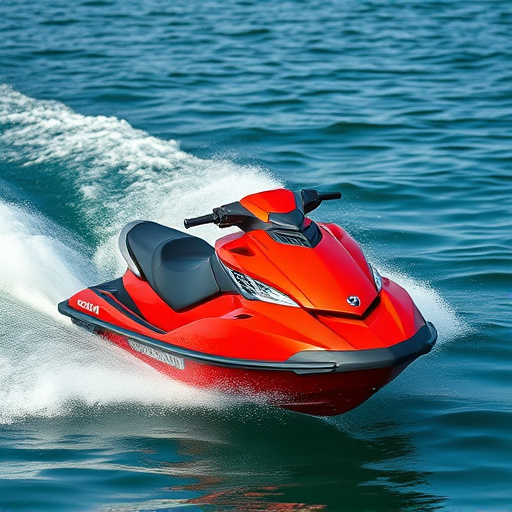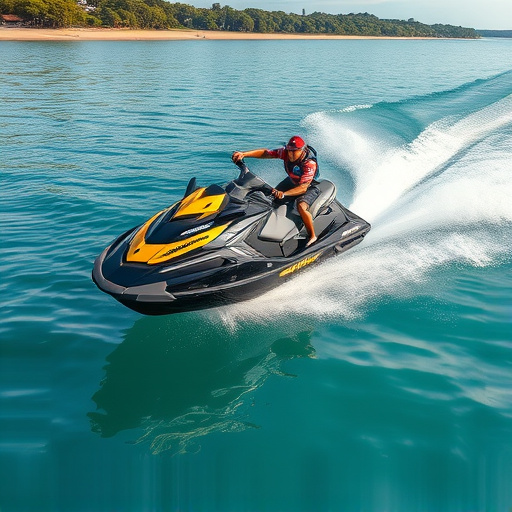Charging a boat battery with a generator is vital for reliable power during voyages. Understand battery function, marine challenges, and optimal charging practices. Use suitable generators and connectors, ensuring safe connections. Adjust charge settings based on amp hour ratings to prevent damage. Maintain batteries through regular cleaning, inspection, and storage care. Prioritize safety when handling, storing, and troubleshooting boat batteries.
“Maximizing your boat’s runtime starts with understanding how to charge its batteries efficiently. This guide offers a comprehensive 10-tip strategy for boaters looking to optimize their charging process using generators. From choosing the right generator for your craft to troubleshooting common issues, you’ll learn best practices for maintaining and extending the lifespan of your boat batteries. Ensure safe handling, discover optimal charge settings, and explore essential maintenance routines – all vital for keeping your boat’s power system in top shape.”
- Understanding Boat Battery Charging Basics
- Selecting the Right Generator for Your Boat
- Connecting the Generator to the Battery
- Optimizing Charge Settings for Efficiency
- Regular Maintenance for Longevity of Batteries
- Safe Handling and Storage Practices for Batteries
- Troubleshooting Common Charging Issues
Understanding Boat Battery Charging Basics

Charging a boat battery is an essential skill for any boater, ensuring your vessel’s electrical systems run smoothly during extended trips. Before delving into charging tips, it’s crucial to grasp the fundamentals. Boat batteries, typically lead-acid types, store energy and provide power to various on-board systems. Understanding how these batteries function and the unique challenges of marine environments is key to effective charging practices.
The process involves regulating voltage, ensuring a consistent charge rate, and accounting for factors like temperature and depth of discharge. Many boats have built-in battery chargers that utilize alternators or dedicated charging circuits. These systems are designed to maintain and restore battery health, preventing overcharging or undercharging, which can lead to damage or reduced lifespan. Knowing how to monitor these processes is vital for keeping your boat’s power source in top condition.
Selecting the Right Generator for Your Boat

When choosing a generator for your boat, consider its power requirements and the size of your vessel. Boat batteries come in various types and amperage ratings, so it’s vital to select a generator that can meet or exceed your battery’s electrical demands. For instance, if you have high-amp batteries powering multiple devices, opt for a powerful generator capable of delivering consistent current.
Size also matters; a larger boat may need a more substantial generator to handle the overall power needs, including charging the boat battery and running other onboard equipment simultaneously. Keep in mind that different generators have different fuel efficiencies, so choosing one tailored to your specific boat battery setup can save fuel and enhance overall performance while at sea.
Connecting the Generator to the Battery

Connecting your generator to a boat battery is a straightforward process but requires attention to detail for safe and effective charging. Start by identifying the positive (+) and negative (-) terminals on both your generator and battery. Ensure they align correctly before making any connections. Use appropriate connectors or cables to establish a secure link between the two, ensuring there’s no risk of loosening during operation.
When connecting, prioritize safety first. Turn off both the generator and battery, and use insulated tools if available. Never attempt to charge a boat battery with a damaged cable or faulty equipment as it can lead to overheating or even an explosion. Regularly inspect connections for any signs of wear or damage, especially after prolonged use.
Optimizing Charge Settings for Efficiency

When charging a boat battery with a generator, optimizing charge settings is key to ensuring efficiency and prolonging the lifespan of your battery. Start by understanding your battery’s amp hour (Ah) rating—this indicates the battery’s capacity and how quickly it can be discharged. Adjust the generator’s output accordingly; overcharging can damage the battery, while undercharging won’t fully utilize its potential. Most generators have adjustable charge settings, so set them to match your boat battery’s specifications for optimal performance.
Additionally, monitor the charging process regularly. Look out for signs of overcharging, such as excessive heat or a strong odor from the battery. Stop the generator if you notice these and allow the battery to cool down before resuming charging. This cautious approach will not only maintain the health of your boat battery but also ensure you’re getting the most efficient charge for your investment.
Regular Maintenance for Longevity of Batteries

Regular maintenance is key to extending the lifespan of your boat batteries. This includes keeping the battery terminals clean and free from corrosion, as even a small buildup can hinder the flow of electricity. Inspect your battery regularly for any signs of damage or leaks, and ensure it’s securely mounted to prevent vibration during operation. Regular charging routines are also essential; consistently undercharging or overcharging can lead to reduced battery performance and premature degradation.
Additionally, consider the ambient temperature when storing batteries, as extreme heat or cold can negatively impact their health. Optimizing these factors will not only enhance your boat’s performance but also ensure your battery remains in top condition for years to come, providing reliable power whenever you hit the open waters.
Safe Handling and Storage Practices for Batteries

When handling and storing batteries, especially boat batteries, safety should always be a top priority. Always wear protective gear, including gloves and safety glasses, to avoid any potential harm from battery acid or sparks. Keep batteries in a cool, dry place, away from direct sunlight and heat sources, as these conditions can lead to rapid degradation and even explosions. Ensure proper ventilation during charging to prevent the buildup of toxic gases.
For storage, use suitable containers that can contain any leaked fluid. Regularly inspect batteries for signs of damage, corrosion, or swelling. If a battery becomes damaged, dispose of it properly according to local regulations. Never store spare batteries in the same area as those being charged to avoid accidental short circuits. Keep a fire extinguisher nearby as a safety measure in case of any unexpected events.
Troubleshooting Common Charging Issues

Charging a boat battery with a generator can sometimes present challenges due to various factors, such as faulty connections or inconsistent power outputs. If you’re facing difficulties, here are a few troubleshooting tips tailored for your boat’s battery. Start by examining all cables and connectors for any signs of damage or loose connections. Even a slight misalignment can hinder charging efficiency. Next, ensure the generator is functioning optimally with a full tank of fuel. An underpowered generator might not be able to deliver the required charge.
Additionally, check the battery itself for any defects or signs of wear and tear. Old or damaged batteries may not hold a charge effectively. Regularly testing the battery voltage during charging can also help identify problems. A consistently low voltage indicates potential issues with either the generator or the battery’s health. If troubleshooting these common problems doesn’t resolve the issue, consider consulting a professional for further assistance to ensure your boat battery is safely and effectively charged.
Charging a boat battery with a generator is a crucial skill for any boating enthusiast. By understanding the basics, choosing the right equipment, optimizing charge settings, and practicing safe maintenance and storage, you can ensure your boat’s batteries stay in top condition. Regularly addressing common charging issues will further enhance your overall boating experience, keeping you out on the water longer and safer.
